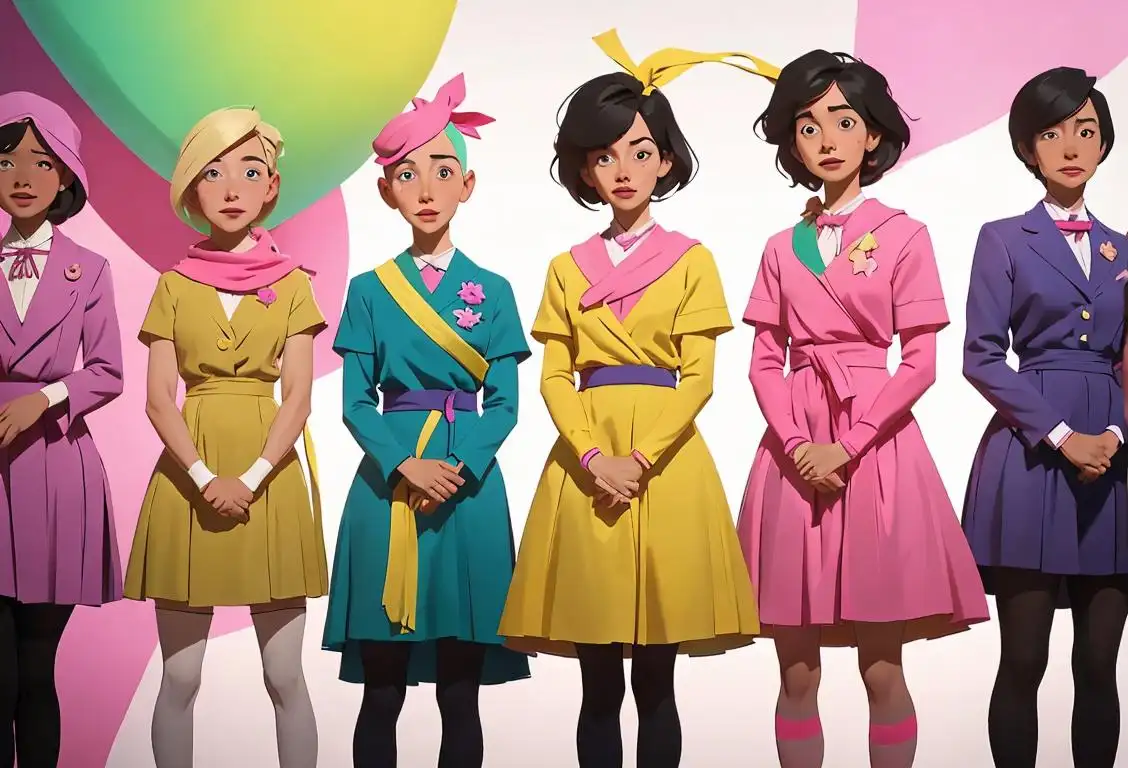National Wear Red Day

Did you ever expect a color could command its own day? Well, strap your laughter belts cause it’s true! The fiery, passionate, and charming red is not just a symbol of love or stop signs anymore—it has its very own special day, and boy does it have a story to tell.
When is Wear Red Day?
It's national wear red day on the 3rd February.
The Vivacious Story of National Wear Red Day
National Wear Red Day, a day when people across the globe don their best rouge outfits, came into the digital spotlight after we observed a whopping 46,086 mentions online. Accentuating its popularity, 3rd February 2017 was the day when its fervor reached an all-time high, making red the new black of the internet.
Tale as Old as Internet Time
The origin of National Wear Red Day can be linked back to the early 2000s when a heart-healthy wave was washing over the internet. The idea was to raise awareness about heart disease, especially in women. Nothing screams attention like the color red, right? Thus, the first Friday of every February was christened as National Wear Red Day—an occasion to raise voice, spread love, and bring out those red sweaters gathering dust in your closet.
Wear Red and Make Heads Turn
Since its inception, National Wear Red Day has gradually evolved into an internet sensation. It's not just about health awareness anymore; it has morphed into a fun, exciting day,emancipating red from its Christmas shackles. From fashion trends, financial organizations promoting red-themed competitions, to sports teams clothed in scarlet, this day paints the town red. Property agencies might showcase red houses and interior designs, and romantics may don red outfits to express their feelings. And the cherry on this crimson cake? Even the sauciest corners of the web maintain PG-13, keeping things light, fun, and inclusive for everyone.
History behind the term 'Wear Red'
2003
The Birth of National Wear Red Day
In 2003, the National Heart, Lung, and Blood Institute (NHLBI) launched National Wear Red Day to raise awareness about heart disease in women. It was initially celebrated on the first Friday in February, coinciding with American Heart Month. The aim was to encourage individuals to wear red attire and show their support for the fight against heart disease, which is the leading cause of death among women in the United States.
2004
The Go Red for Women Campaign
In 2004, the NHLBI expanded its efforts by creating the Go Red for Women campaign. The campaign sought to educate and empower women to take charge of their heart health. It quickly gained momentum and received widespread attention, leading to increased awareness about heart disease in women across the nation. The iconic red dress became the symbol of the campaign, representing both the power and vulnerability of women's hearts.
2005
Corporate Partnerships and Fundraising
By 2005, numerous corporations and organizations had joined the movement and became supporters of National Wear Red Day. Many companies encouraged their employees to wear red, organized fundraising events, and donated a portion of their proceeds to heart health research and education. The corporate partnerships greatly amplified the impact of the campaign and contributed to funding life-saving initiatives.
2009
National Wear Red Day Goes Global
In 2009, National Wear Red Day expanded internationally, with countries around the world joining the movement to raise awareness about heart disease in women. It became a global initiative to combat this widespread health issue and foster solidarity across borders. The red dress symbol transcended cultural barriers, representing the universal fight against heart disease.
2010
Iconic Landmarks Illuminated in Red
To further emphasize the significance of National Wear Red Day, iconic landmarks worldwide began illuminating their structures in red lights. This powerful visual display drew attention to the cause and served as a reminder of the global fight against heart disease. Landmarks such as the Empire State Building in New York City and the Sydney Opera House in Australia participate in this annual tradition, creating a stunning display of support.
2020
Expansion of Wear Red Efforts
Over the years, National Wear Red Day evolved beyond a one-day event. The entire month of February is now recognized as American Heart Month, during which individuals and organizations continue to raise awareness about heart health. Wear Red initiatives have expanded to include educational campaigns, heart-healthy challenges, and community outreach programs. The ongoing efforts have brought significant attention to cardiovascular health and inspired millions of people to make positive lifestyle choices.
Did you know?
Did you know that in different cultures, red represents everything from joy to luck to life? Perhaps, wearing red brings us closer in more ways than one!Tagged
romance awareness fun finance love property sports health fashion internet trendsFirst identified
9th March 2015Most mentioned on
3rd February 2017Total mentions
46086Other days
Wear Red Day
Family Day
Opposite Day
One Day
Action Day
Awareness Day
Believe Day
Happiness Day
Suicide Prevention Month Day
Cancer Awareness Day








